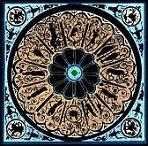
"The placement of the celestial bodies in the heavens at any given moment in time reflects the nature of that moment, including the nature of an individual born in that moment."

The main traditions used by modern astrologers are: Vedic astrology, Western astrology, and Chinese astrology. Vedic and Western astrology share a common ancestry as horoscopic systems of astrology, in that both traditions focus on the casting of an astrological chart or horoscope, a representation of the position of the Sun, Moon, and planets at the moment of the event.
Chinese Astrology is quite different from other systems of astrology in that the twelve signs of the zodiac do not divide the sky, but rather the celestial equator. Each sign of the zodiac governs a different year, and combines with a system based on the five elements of Chinese cosmology. Each zodiac sign is represented by an animal which governs specific years of time, instead of months.
Throughout its long history, astrology has come to prominence in many regions and undergone developments and change. Although not commonly used, many astrologers still have interest in several historically significant traditions of astrology which include: Arab and Persian astrology (Medieval, near East), Babylonian astrology (Ancient, near East), Egyptian astrology, Hellenistic astrology (Classical antiquity), and Mayan astrology. Many mystic or esoteric traditions have links to astrology. Some of these include: Alchemy, Chiromancy, The Kabbalah (Kabbalistic astrology), Medical astrology, Numerology, Rosicrucian or "Rose Cross", and The Tarot
The majority of Western astrologers base their work on the Tropical Zodiac which divides the sky into twelve equal segments of 30 degrees each, beginning with the first point (Aries) where the line of the Earth's celestial equator and the ecliptic (the Sun's path through the sky) meet at the northern hemisphere spring equinox. Due to the precession of the equinoxes the zodiacal signs in this system bear no relation to the constellations of the same name, but instead stay aligned to the months and seasons.
Practitioners of the Vedic astrological tradition and a minority of Western astrologers use the The Sidereal Zodiac. This zodiac uses the same evenly divided ecliptic but approximately stays aligned to the positions of the observable constellations with the same name as the zodiacal signs. The sidereal zodiac differs from the tropical zodiac by an offset called the ayanamsa, which steadily increases as the equinoxes drift further.
In the past, astrologers often relied on close observation of celestial objects and the charting of their movements. Modern astrologers use data provided by astronomers which are transformed to a set of astrological tables called ephemerides, showing the changing zodiacal positions of the heavenly bodies through time.
Electional astrology (also known as Katarchic astrology) concerns itself with finding the best time to do a particular activity, taking into account the individual person, and the place where the action will be performed, in order to get the best results possible. It can determine the ideal time to initiate an action, such as buying a house, starting a business, getting married, buying a car, beginning a journey/travel, and so on. A Farmers Almanac uses such concepts.
Mundane astrology (or world astrology) is the application of astrology to world affairs and events, government and politics, weather, natural and man-made disasters, and the rise and fall of empires or religions. This includes the Astrological Ages, such as the Age of Aquarius, Age of Pisces and so on. Each age is about 2,150 years in length. These massive ages correspond to major historical events and current developments in the world. It's purposes are to look back and explain history and also to predict the future (sometimes for the prevention of danger or disasters)..
Horary astrology is used in an attempt to answer a question by constructing a horoscope for the exact time and place at which either the question was asked by the querent, or received by the astrologer. The answer might be a simple yes or no, but is generally more complex, offering insights into the motives of the questioner, the motives of others involved in the matter, and the options available to him./her
Natal astrology (also know as genethliacal astrology) is based upon the concept that each individual's personality, life experiences, or path in life can be determined by constructing a natal chart for the exact date, time, and location of a person's birth. This is the most common branch of horoscopic astrology seen in the western world today.
The focus on the natal chart of the individual is the most significant contribution and shift of emphasis that was made during the Hellenistic tradition of astrology that originated in Egypt, and it quickly spread into Europe, the Middle East and India. A Natal Chart shows the positions and aspects of the sun, moon, and planets at the exact time and location of an individual's birth, for the purpose of gaining information about the individual and about future events.
 Introduction to Astrology
Introduction to Astrology
 Astrological Self Exploration
Astrological Self Exploration
 The Shaping of Astrology
The Shaping of Astrology
 [Astrological Traditions and Zodiac System]
[Astrological Traditions and Zodiac System]
 The Inner Workings of Astrology
The Inner Workings of Astrology